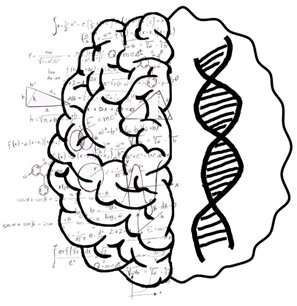
DNA variation in a gene called ROBO1 is associated with early anatomical differences in a brain region that plays a key role in quantity representation, potentially explaining how genetic variability might shape mathematical performance in children, according to a study published October 22nd in the open-access journal PLOS Biology by Michael Skeide of the Max Planck Institute for Human Cognitive and Brain Sciences, and colleagues. Specifically, the authors found that genetic variants of ROBO1 in young children are associated with grey matter volume in the right parietal cortex, which in turn predicts mathematical test scores in second grade.
Mathematical ability is known to be heritable and related to several genes that play a role for brain development. But it has not been clear how math-related genes might sculpt the developing human brain. As a result, it is an open question how genetic variation could give rise to differences in mathematical ability. To address this gap in knowledge, Skeide and his collaborators combined genotyping with brain imaging in unschooled children without mathematical training.
The authors analyzed 18 single nucleotide polymorphisms (SNPs) -genetic variants affecting a single DNA building block—in 10 genes previously implicated in mathematical performance. They then examined the relationship between these variants and the volume of grey matter (which mainly consists of nerve cell bodies), across the whole brain in a total of 178 three- to six-year-old children who underwent magnetic resonance imaging. Finally, they identified brain regions whose grey matter volumes could predict math test scores in second grade.
Source: Read Full Article
